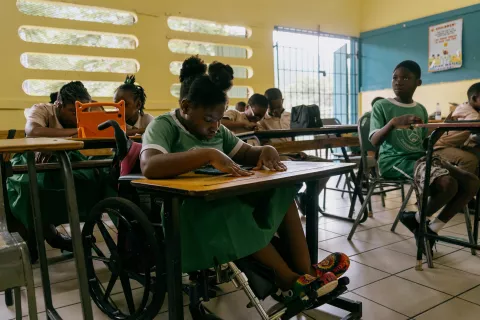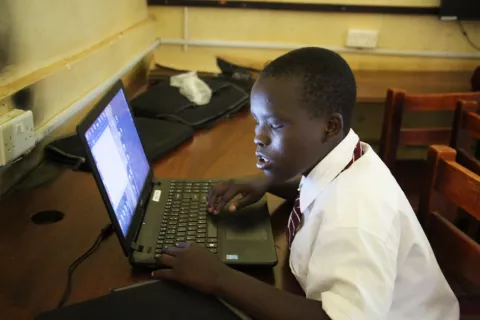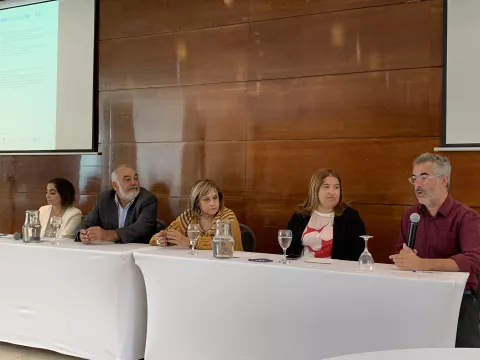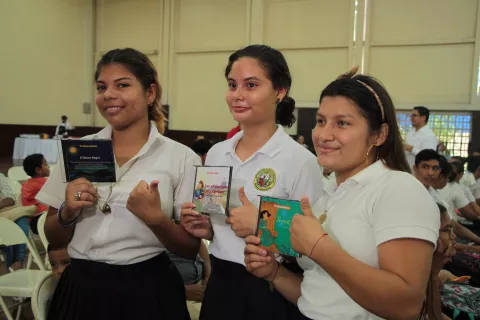Methodology for piloting countries
Step-by-step for better results
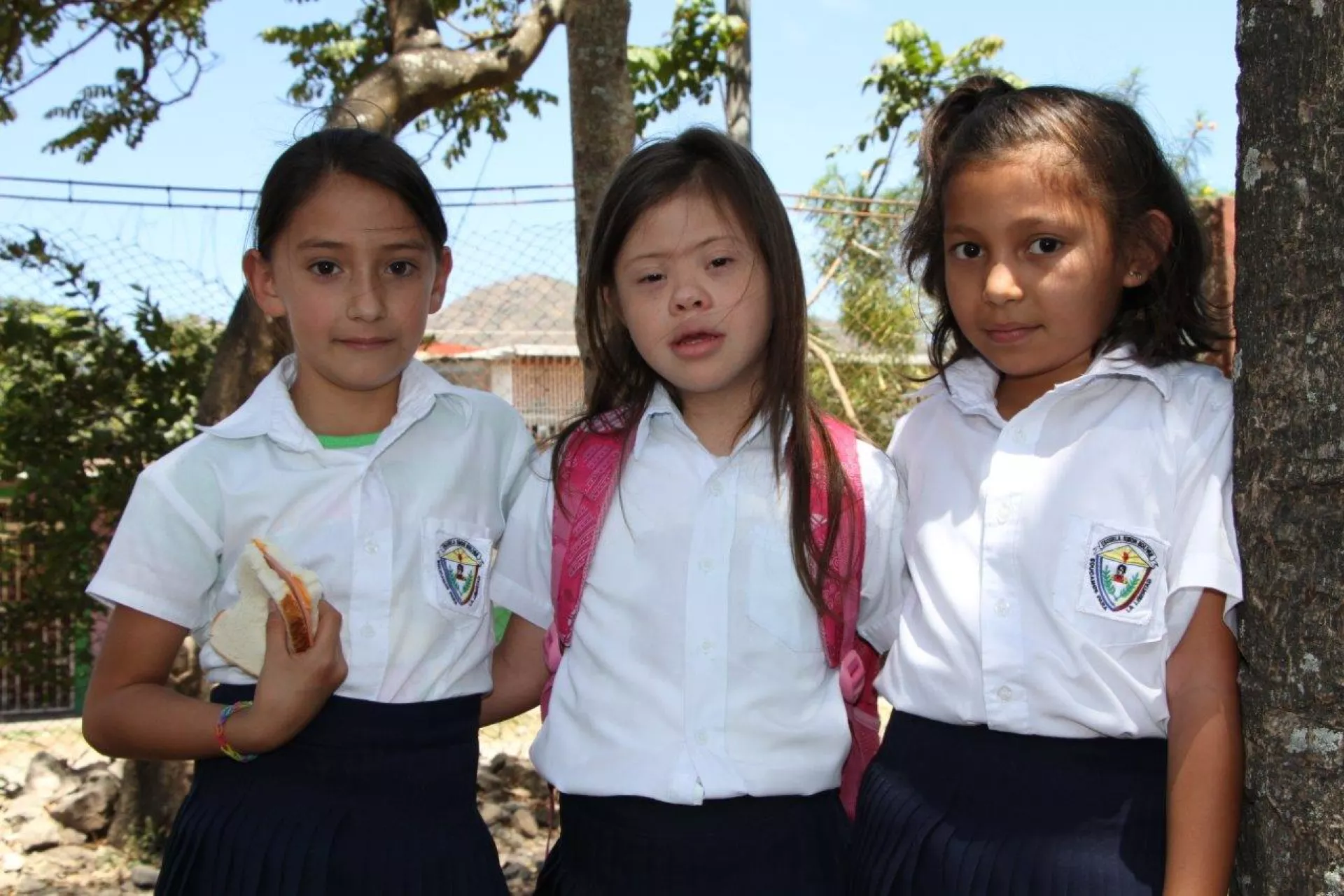
- Available in:
- English
- Español
Methodology to pilot the Accessible Digital Textbooks initiative at country level
UNICEF and its partners have developed steps to produce, test and validate the piloting of the accessible digital textbooks at the county level. The textbooks must be based in the country’s educational system and produced jointly with a multidisciplinary technical team, collaborating with teachers, experts, technologists, publishers, authors and, as always, users with disabilities and OPD. To help countries produce materials, UNICEF and its partners propose a three-phased, step-by-step method: (1) pre-production; (2) production; and (3) post-production. This chapter offers an overview and guidance on how to administer the phases to reach the goal of developing accessible digital textbooks.
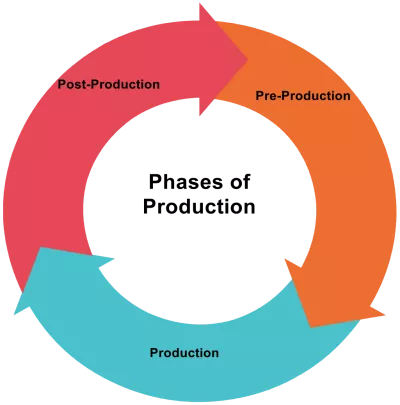
Pre-production phase
The pre-production phase includes initial implementation steps to build local capacity in a country. All stages are needed, but the sequencing of the following actions is optional:
1. Understand the needs of the country in terms of accessibility to learning materials and inclusive education: Identifying the country preparation and configuration prior to testing the initiative can be done through the Country Readiness Questionnaire. This questionnaire seeks to assist the country in gathering information that will support the implementation of accessible digital textbooks. It is divided into three areas which explore a macro analysis of the ecosystem, the production of accessible digital textbooks and in school factors. The analysis is concluded with the list of the gaps identified and the solutions to mitigate.
2. Identify key stakeholders and establish a mechanism such as a Steering Committee. Identifying and mapping which OPD, NGOs, UNICEF representatives, donors and MOE representatives should be engaged throughout the process is key. A mechanism such as a Steering Committee should be formed to move the initiative forward in the country, and initial meetings held to explain the purpose, benefits and challenges of the initiative as well as to define roles and responsibilities/accountabilities. Key publishers and local academia should also be engaged in this early process if feasible. In addition, local users, such as students with and without disabilities, teachers and parents of children with and without disabilities should be identified and engaged. The mechanism such as a Steering Committee should also include OPD members that represent different categories of disabilities. In addition, it is important to identify local providers/technologists who can convert the master copies of the textbook into an accessible format such as DAISY/EPUB 3.
3. Begin planning and coordinating the development of a framework. An initial step is to bring together key stakeholders involved in designing and procuring accessible digital textbooks. The available technical and financial resources within the country and how to leverage and use them must be discussed. Discussions should also include how to access technology/devices for students (e.g., tablets, computers, mobile phones) if they are not already available. Understanding the capacity of a country team, led by the MoE with support from UNICEF HQ, to develop an accessible digital textbook should include a conceptual and technological needs assessment to better determine what gaps and opportunities exist in the country. The methodology and technical gaps to be filled (training, workshops, capacity-building, support, discussions, etc.) must be defined using the country’s education sector plans, if available.
4. Establish a core technical team with members that are part of the mechanism such as the Steering Committee. Recruiting local professionals and specialized teachers to serve on a multidisciplinary technical team is critical. This core team needs to encompass persons with disabilities with diverse experiences, including expertise related to children, teaching/learning, pedagogy and learning styles. Different types of teachers (e.g., general education teachers, special education teachers, linguistic experts, and learning and assessment experts, where available) should be engaged in this initiative. This team should work together with OPD to provide support and advocacy initiatives for persons with disabilities. The team should also include the technology developers to understand the capacity and limitation of the current technology. This technical team will be in charge of adapting the content of the textbooks, produce the accessible formats, and be part of the validation process.
The multidisciplinary team should be trained on the topics and materials to be adapted; be neutral regarding the content; respect the script and the experts’ opinions; work together with disability communities; and have open dialogues and exchanges. It is recommended that each member of the team agree on the schedule, budget, needs, expected results, and intermediate and final product deliverables, as well as on the quality, specifications and content.
|
Recommended composition of the core technical team: |
|---|
|
MOE representatives |
|
Team coordinator |
|
Multidisciplinary technical experts/teachers per category of disability |
|
Technology specialists |
|
Linguists |
|
One DAISY/EPUB 3 technology specialist |
|
Learning and assessment specialists |
|
Publishers and authors |
|
Users with disabilities |
| Audiovisual producer, designer, sound engineer, and editing experts |
|
The primary roles and functions of the multidisciplinary team are to: |
|---|
|
Plan the project’s stages, activities, and timelines; |
|
Organise operational, technical, and financial resources; |
|
Convene the technical production team; |
|
Lead and execute the project until the final product is achieved; |
|
Make sure the materials produced are properly validated by the local disability community and users; |
|
Articulate actions for the technical/production team; and |
|
Guarantee the product’s implementation as public policy. |
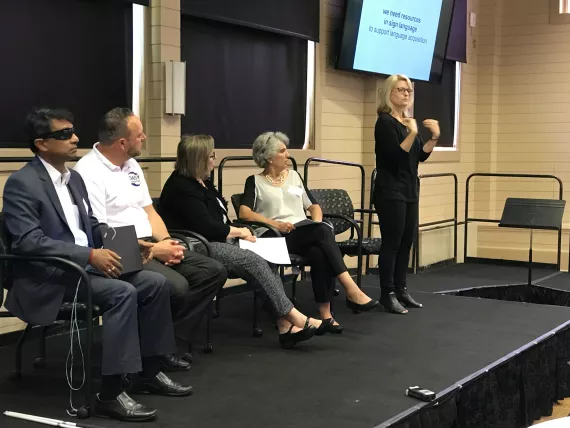
5. Agree on the UDL principles. Each member of the multidisciplinary team should acknowledge the guidelines and, when necessary, be trained on the premises of the UDL principles to facilitate the comprehension of the fundamentals: from disability-specific to inclusive/universal design principles.
6. Define and analyse the technology ecosystem. The team should examine and understand the production infrastructure within publishers and governing bodies, to determine if they have the capacity to produce accessible textbooks and to establish if the existing EPUB technology infrastructure is prepared to handle the depth of requirements for universal textbooks.
7. Select textbooks from the curriculum. Though it would be ideal for all textbooks within the curriculum to be accessible to learners with disabilities, it may be best while initiating the first phases of the project to select a few textbooks and provide those in an accessible digital format in order to test them within the classroom setting.
8. Select pilot schools. Before scaling the project nationally, piloting the initiative in at least five schools is recommended. Inclusive schools, if they exist in the country, should be selected as part of the pilot initiative only if the teacher is fluent in sign language to guide and respond to the students’ needs. If the country has yet to establish a fully inclusive educational system or is in the process of doing so, it is recommended to include schools with a varied student population, including students with different types of disabilities.
9. Organize a one-week workshop. A workshop with the core technical team is recommended to review how to produce content for accessible digital textbooks and to agree on what adaptions should be made for the selected textbook following UDL principles. Participants should also start creating the accessible activities together to understand UDL and how UDL concepts relate to technology. If needed, external experts should be involved to educate the core team about inclusive education and UDL and how these principles can be integrated into accessible digital textbooks.
10. Validate the process. Before entering in the production phase, the process should be validated by the MOE and stakeholders, as well as by representatives of the disability groups.
Production phase
The production phase includes developing and adapting the prototype. In most cases, publishers do not have the original files of materials in accessible formats. Therefore, the first step is to transform the materials delivered by the publisher into a format that can be adapted and sent back to the publisher for distribution, e.g., in EPUB 3 format.
Public policies can encourage publishers to make their books born accessible. Throughout this phase, it is important to negotiate with and offer training to publishers to generate a cultural change and promote the use of UDL as a fundamental part of accessible digital textbooks.
Producing adaptations in different media is extensive and delicate work because it requires expertise, resources, quality content and knowledge at all stages.
The recommended step-by-step approach is as follows:
1. Develop a storyboard. A collaborative meeting with the multidisciplinary team should be held to adapt the textbook content. The book should be analysed to define, chapter by chapter, what accommodations are needed. For example, agreement is needed on where to add a video with sign language next to an exercise, or where to add interactivity for an exercise.
2. Establish technical needs. Once all accommodations have been detailed in a flow chart for the entire book, the technical resources needed to produce the accommodations should be defined. For example, to produce the sign language videos, the team should define the length of each video, the narrators’ scripts, the quality of the images, the translation of the texts, the production company/consultants, the editors, etc.
3. Identify the technical teams producing each accommodation. This step entails identifying who will coordinate, create, produce and manage the content for each accommodation.
4. Start production. The different accommodations/media for the textbook should be produced, such as filming the sign language videos, recording the narration and audio descriptions, etc. Every step of production should be coordinated by an expert and developed by the members of the technical team following production guidance or international standards.
5. Validate the content. Before the post-production phase, all content materials should be validated by publishers, teachers, OPD and persons with disabilities.
Post-production phase
This phase includes creating the ‘production master files’, as well as ‘translating’ these files into the different accessible formats. It also includes defining the conditions for quality control and final production of the materials. The recommended steps are the following:
1. Edit the accessible content. The publisher participates in the organization and design of the material and in putting together the final pieces (illustrations, text, videos, audio, etc.). The publisher will then deliver the final product to the coordinator. Content editing and adaptation at this stage should be performed by and with professionals who have specific knowledge in the fields of special education, in pedagogy and/or in the specific field of study covered by the material. Technical knowledge related to accessibility is part of the process; curriculum content analysis must also be taken into account, as well as the competencies targeted by each adaptation.
2. Design the accessible features. The different productions should be compiled and sent to a web designer/technical expert to design the textbook, including the different media/adaptations in the EPUB 3 document.
3. Proof the final features. All content should be edited and checked for accuracy.
4. Produce a master file. The digital source file will be adapted as necessary to create what is called the ‘production EPUB 3 master file’, or the basis from which textbooks will be produced in the various accessible formats. This text file will be linearized and ordered according to pedagogy and following the guidance criteria. The various graphic elements will also be identified and adapted before being transferred to the publisher.
5. Agree upon textbook design with experts and users. This very important step in the post-production phase determines if the requirements of the accessible textbooks have been met. The validation should be performed by textbook users (students, parents and teachers) in various contexts (for different disabilities, in diverse schools and environments, etc.). This phase requires a defined methodology and should be conducted by experts in the education field.
6. Test and validate. Multiple testing sessions should be planned with different groups of users using standardized methodology. The methodology and the final version of the accessible digital textbook should be validated with publishers, technologists, OPD, teachers and users.
7. Distribute the textbook. Depending on the local distribution channel, the accessible digital textbook will be distributed to schools and users. Publishers and users must have a means of communicating to track challenges and validate quality control.
8. Create a user guide. For the user to understand how to use the tool (textbook), the step-by-step process should be documented and the open-source document shared with the users, partners, stakeholders, publishers, etc. A tutorial embedded into the textbook is recommended, as are accessible webinars or training materials.
9. Document the process. Keeping track of the necessary steps, challenges, gaps, learnings, results and outcomes is recommended, not only for reporting reasons, but also to share with the community and stakeholders involved in the innovation. The progress will inform future countries when they implement the initiative.
[1] UNICEF is validating the pilot process of this initiative in several countries, which will be evaluated by external stakeholders. The findings from this process will be integrated into future editions of this guidance document.

